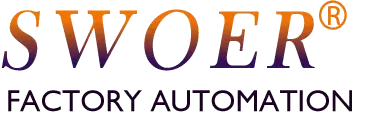The core principle is that multiple independent arms work in parallel to drive a single moving platform.
- Core Structure
- Base Platform: The fixed base.
- Moving Platform: The end-effector that carries the tooling.
- Drive Arms: Typically 3 or 4 arms, each driven by an independent servo motor on the base.
- Forearm Links: Lightweight rods connecting the drive arms to the moving platform via spherical joints.
- Working Process
- Command Reception: The control system receives the target coordinates.
- Inverse Kinematics Calculation: The system calculates the required angle for each servo motor to reach the target simultaneously.
- Coordinated Drive: All servo motors rotate their drive arms precisely and in sync.
- Platform Movement: The motion of the drive arms, transmitted through the forearms, moves the platform.
- Task Execution: The platform moves to the target to perform tasks like picking and placing.
III. Simple Analogy
Imagine moving a cup by supporting it with three fingers. All three fingers must move in a coordinated way to control the cup’s position—this is how a parallel robot works.
In summary, the spider robot uses a “centrally coordinated, parallel drive” principle, trading some workspace for unparalleled speed, rigidity, and precision.
